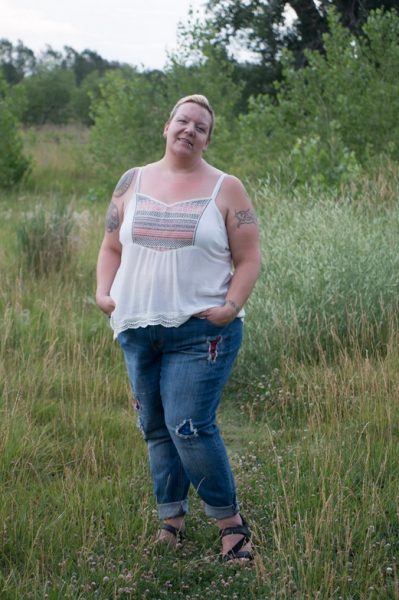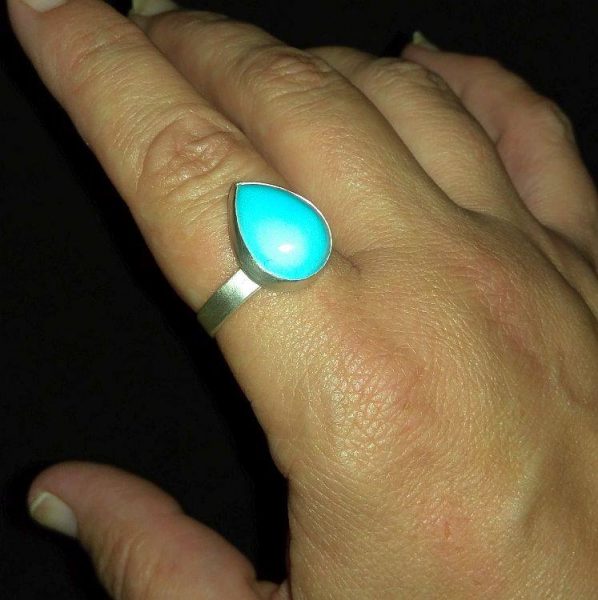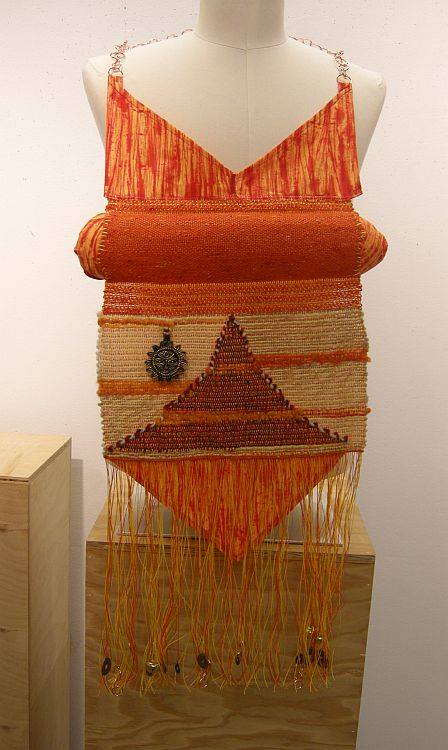Traditions and Non-Traditions
Annie Seipel is a non-traditional student in almost every sense of the word.
A roundabout road has brought her to CSU at age 45, where she’s on the brink of attaining her bachelor’s degree in a field of study she’s basically cobbled together herself: a foundation in geology, evolving into a combined major in Arabic and metal-working.
Her particular fascination lies in the jewelry-making processes of the nomadic people of the Middle East - a seemingly esoteric field of study, particularly for a geologist from Colorado. Until you hear her talk about her studies.
“Metals is such exciting and dynamic form,” she raves. “We do everything by hand but we have a studio with a huge number of resources. The nomads did amazing art while traveling.
“I think back to them moving all of their things, but still they found ways to make fire hot enough to solder metal, they found their stones and metals along the way, and were able to create such beauty.
“And it wasn’t just adornment, it was a way to speak to status and culture, to carry their wealth on their person. The process and the meaning are both just amazing,” she says.
Her passion for nomadic peoples becomes even more clear as she lays out her own path.


From Heavy Metal to Earth Metals to Metal-Working
The itch to be on the road has been a part of Seipel’s life from early on. A childhood fascination with distant places - Egypt to begin with and spreading out from there - took on a more domestic shape when she was a roadie for heavy metal bands in high school.
With her high school diploma in hand, she attended a two-year program at the Art Institute of Colorado, specializing in music business, ready to take on the next challenge that route could provide. It didn’t take Seipel long to fall out of love with the lifestyle. She left the literal road behind for a more metaphoric career path: wandering from retail to data entry, stumbling eventually into payroll management.
“I faked my way into accounting,” she recounts with a chuckle. But after nine years of it she realized, “it’s not good for an artistic soul.”
And Seipel is an artistic soul, always has been, though she had set it aside as a hobby, early on.
To keep that part of her alive, she started an art business, focusing on fiber arts: she sold purses, hats, customized costumes.
But, eventually, she realized that it wasn’t enough, that she wanted to learn more, to go farther. And it became clear that her path led her back to school.
“You don’t give up,” she says, remembering the advice that encouraged her to start again, “you keep going. You have to really follow your heart and believe what’s right for you.”
Always fascinated with what the earth could yield, Seipel decided to study geology, eventually earning her science and art associate degrees from Front Range Community College.
Along the way, she took a jewelry-making course as an elective and something just clicked.
Her childhood love of the Middle East, her love of art, her love of travel: “That jewelry-making elective just brought it all together, the art, the culture, the challenge,” she recalls.
And just like that, she could see the next bend in the road: a school with an excellent geology program, an excellent jewelry-making program, an excellent Arabic program.
Seipel applied to CSU.
New Language, New Thoughts
The interest in the Arabic language and the Middle East doesn’t stem wholly from a little girl’s fascination with pyramids and mummies.
It actually started in Amsterdam where a trip for fun sparked her interest in multi-nationalism.
“There were just so many different languages. It was one of the coolest things I’ve ever experienced. The immersion in a different language, it pushes you,” Seipel says. “I’m an adult, set in my ways and I’ve been trying to set that aside, find new ways to think, outside of the regimented ways we do things.”
That is what the study of language and art have really taught her, Seipel thinks. “There are other disciplines that say there’s only one way, one channel to do things. Most liberal arts students don’t believe that. You have to believe in yourself and your own dream.”
Together, this desire - to understand, to challenge herself, to be more - and this conviction - that the path she’s on is right for her, no matter how strange and obscure to outside eyes - are the driving force behind her studies now and the future she sees laid out before her.
A nomadic heart
Seipel’s next hope is to do her final year abroad in Morocco or Tunisia, for the full immersion in her language studies, but also in the hopes of meeting local artists and the nomadic groups that still live in the region.
“I want to be able to make those connections and inroads into the arts community and museum community,” she shares, “but I also want to see what it’s like to be out in the world, to do something I’ve never done before, to be outside my comfort zone.”
From there, she’s hoping for a year of Fulbright scholarship, to stay in the area and continue to make connections and jewelry alike.
And from there, she has a destination in mind, but mostly just the desire to keep going.
“I’d like to keep studying, get a master’s, write a book. But mostly,” she says, “I look at all the exciting things ahead of me - I just want to see what happens.”
Learn more about the Department of Art and Art History.

